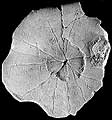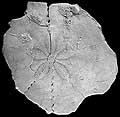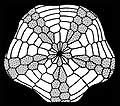The Echinoid Directory
Parmulechinus Lambert, 1906, p. 63.
[=Stenaster Lambert, 1905, non Billings, 1858 (objective) ]
| Diagnostic Features |
|
|---|---|
| Distribution | Oligocene and Lower Miocene, southern Europe and the Mediterranean. |
| Name gender | masculine |
| Type | Stenaster labrei Lambert, 1905, p. 140 [= Scutella agassizi Oppenheim, 1902], by original designation. |
| Species Included |
|
| Classification and/or Status |
|
| Remarks |
|



